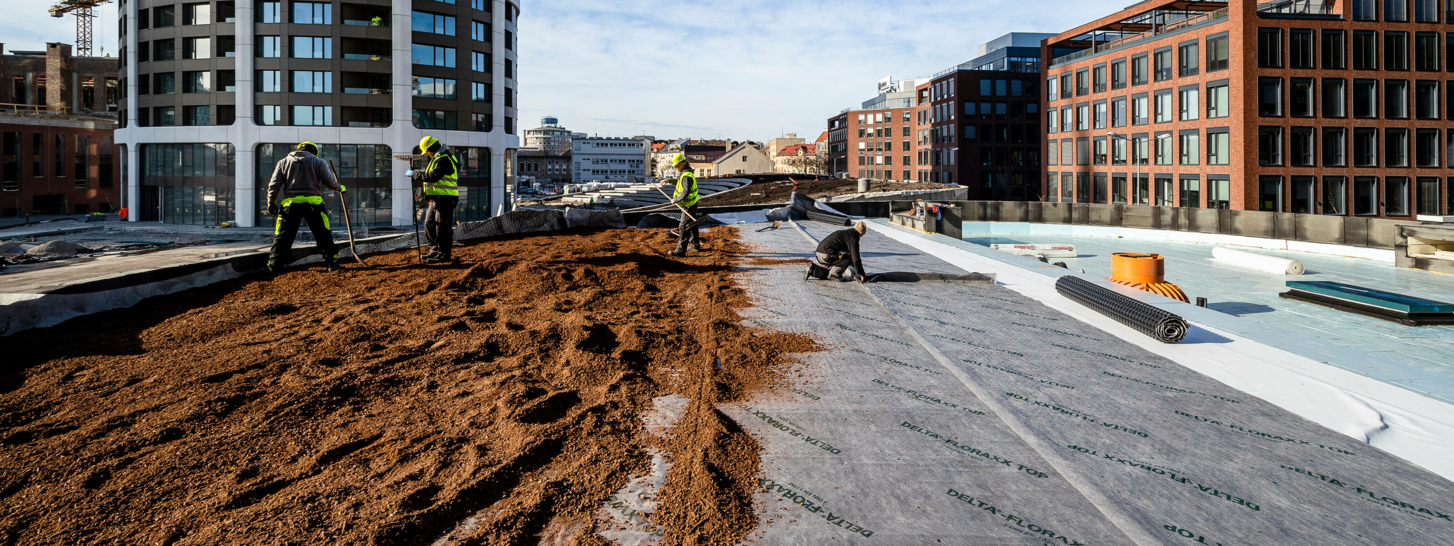The structure of the flat roof consists of several functional layers. First of all, the said structure includes the vapour barrier, the thermal insulation, and the sealing. Depending on the type of use of the flat roof, you can add root protection, separating and drainage layers, protective and drainage sheets, heavy surface protection in the form of gravel or paving, as well as substrate and vegetation layers. All these layers must be sensibly coordinated with one another in the flat roof structure. In particular, the seal is heavily stressed by weather and environmental influences. This is why it needs a particular protection.
Above all, however, proper drainage plays an important role when it comes to flat roofs. Since unlike on a pitched roof, rainwater can accumulate on flat roofs without efficient drainage. However, the standing water increases the risk of leaks. In addition, the organic substances - such as leaves - deposited in there may lead to long-term damage to the roof waterproofing.
These are problems for which we at the company DÖRKEN offer you safe, efficient, and economical solutions with our expertise in the field of protective and drainage membranes.
 Belgium nederlands
Belgium nederlands Belgium français
Belgium français Canada english
Canada english Canada français
Canada français China chinese
China chinese Czech Republic čeština
Czech Republic čeština Deutschland deutsch
Deutschland deutsch France français
France français Hungary magyar
Hungary magyar International english
International english Italy italiano
Italy italiano Netherlands nederlands
Netherlands nederlands Poland polski
Poland polski Russia русский
Russia русский Slovakia slovenčina
Slovakia slovenčina Switzerland français
Switzerland français Switzerland deutsch
Switzerland deutsch Turkey Türkçe
Turkey Türkçe USA english
USA english
